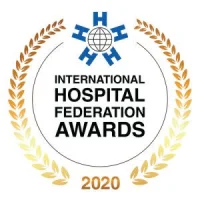A team of U.S. researchers identified the most effective hospital-based methods for reducing readmission rates, such as telehealth programmes and increased nursing involvement among others.
You may also like: Hospital Readmissions and Machine Learning
In line with the U.S. Patient Protection and Affordable Care Act, since October 2012 hospitals are penalised for excess readmission rates by the Centers for Medicare and Medicaid Services, which reimburse them at lower rates. The American Hospital Association data show that during this period the penalties have amounted to nearly €1.7 billion ($1.9 billion).
This motivated hospitals to implement various hospital readmission reduction
programmes (HRRPs) aimed at improving health outcomes and controlling costs.
The HRRPs vary across institutions, which may choose, for example, to
collaborate with certified home healthcare agencies and primary care practices;
use telehealth
programmes; conduct post-discharge phone calls or house-call programmes;
implement discharge-planning programmes, etc. The study (Summers and Atav 2020)
led by faculty at Binghamton University, State University of New York, USA,
assessed which HRRPs had the biggest impact on reducing readmission rates.
The sample comprised hospitals within upstate New York, 94 facilities across
53 counties in total, ranging from metropolitan to rural status. The focus was
on HRRPs aimed at patients admitted with heart failure or pneumonia (the most
common diagnoses for hospitalisation). Organisational characteristics of
hospital systems and educational levels of nursing involvement in hospital
programmes were analysed.
The researchers first identified which, if any, HRRPs were used. For
interdisciplinary case-management teams, the participation of registered nurses
or advanced-practice registered nurses was recorded. Further on the association
between the type and number of implemented HRRPs and the readmission and
reimbursement outcomes was analysed.
The results showed that the most efficient organisational measures to reduce
readmission rates and reimbursement penalties for hospitals in upstate New York
were:
- Collaboration with certified home health agencies.
- Implementation of telehealth programmes.
- Conducting house calls, which brings nurse practitioners or physicians into the patient's home for care following discharge. These programmes were found to cause the most significant decrease in readmission rates and reimbursement penalties.
- Participation of advanced practice nurses on care management interdisciplinary discharge teams.
- Increasing the number of HRRPs applied in a hospital.
Based on these results, the authors provide a list of recommendations for
hospitals. Particularly, the management should:
- Support increased utilisation of certified home health agencies, telehealth and house calls.
- Enhance their case management teams with advanced practice nurses.
- Further engage with government and hospital policies for evidence-based HRRP initiatives.
References
Summers M, Atav S (2020) Reducing Hospital Readmissions in Upstate New York. Teasing Out the Effective Programs. Professional Case Management, 25(1):26–36.
Source: EurekAlert
Image credit: iStock










